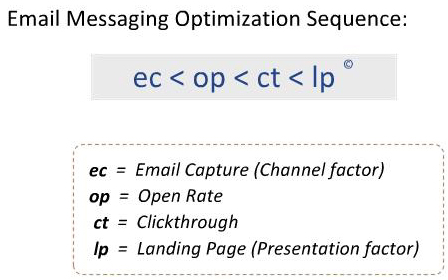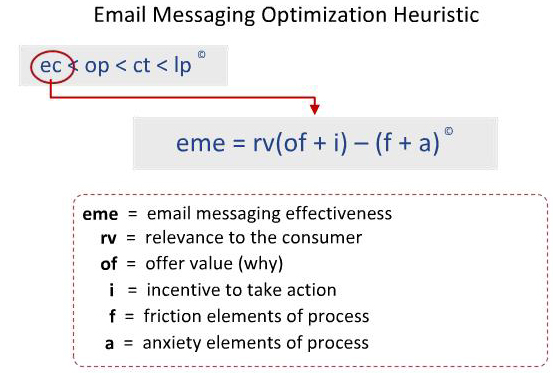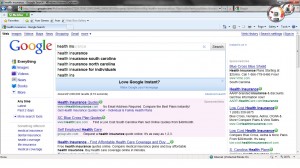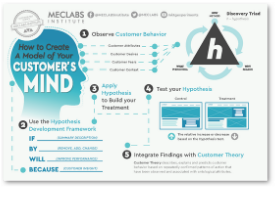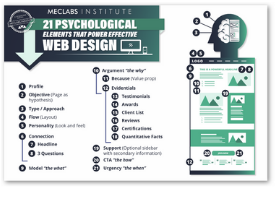What’s the difference between a webinar and a website? The last four letters.
At first, this seems like a bad joke out of the “1,001 Wacky Jokes for Children of Marketers” (which I believe is out in paperback now). But take a step back from your website and webinar, look at the big picture, and you’ll quickly find that they both have the same goal – a conversion.
At MarketingExperiments and MarketingSherpa, not only do we research and publish information about the most effective marketing practices – the “what really works” – we also conduct webinars ourselves.
With that in mind, here are five questions we ask ourselves when staring in the mirror on the morning of a webinar…
Are you providing value?
According to MarketingExperiments research, the most important positive element to conversion is motivation. A negative element that hurts conversion is friction. Not to be overly simplistic, but given this paradigm, the ideal situation to use a webinar is when you have customers motivated enough to overcome the friction of having to take an hour or so out of their day and spend it with you.
Of course, this is why so many B2B companies conduct webinars. They have complex knowledge and products that customers are, at some level, motivated to find out more about. But let’s drill a little deeper into that thought, and perhaps address that second question as well. For any conversion to happen there must be a value exchange, and webinar attendance, while not a final sale, is a mini-conversion. So the best kind of customer to reach is the one you can truly provide value for.
Your knee-jerk reaction might be, “I provide value to every possible customer.” However, it will better serve your efforts if you take an honest self-assessment of your possible content, and decide who (if anyone) would give something for this content. Because attendees are paying with their time.
Are you communicating that value?
Every activity that happens before the webinar is your chance to make this sale. Remember, this is essentially a sale and the price is your audience’s time.
Your title, the description of your webinar, promotion blog posts, tweets, social media conversation – these all must be focused on a challenge or objective the customer has, not on your product’s features and functions.
All of your pre-webinar activity must create a solution to that challenge on three levels.
- It must be relevant. If your audience is mid-level warehouse managers, telling them how to recreate an entire manufacturing process over which they have no control is not relevant to their challenge of meeting their production goals within the current process.
- It must be urgent. Your customers will not spend an hour with you to solve a problem that is 15 months away. They have to meet this quarter’s goals and numbers and that is where their greatest motivation lies. In the long run there is no long run if they don’t fix short-term problems. Or, as noted economist John Maynard Keynes has said, “In the long run we are all dead.”
- It must be important. Your audience likely has many challenges in their job. But if you are only addressing something minor, why should they spend an hour with you? Put another way, would you try to sell better tires for an airplane that has no wings?
Take an unbiased look at your efforts and make sure you truly are addressing your customer’s most pressing issues, and not just, like many companies, putting new wrapping on the same sales pitch.
Are you constantly engaging your audience?
For the host, the key is value, value, value. Why start the webinar with an ad for yourself, as so many do? What is the value for the customer? Every minute they remain on the webinar is a micro-sale to get them to stay on for the next minute.
As Flint McGlaughlin, the Director of MECLABS Group, teaches, “Dazzle me gradually.” Continuously provide value to your audience, to overcome the inherent friction of staying on any webinar.
From a technology standpoint, have a conversation with them using polls and answering submitted questions throughout. Have staff on hand to conduct Q&A through your platform since you won’t likely have the time to address every question on the call. Encourage them to have a conversation with each other by using a Twitter hashtag.
Again, your focus is not the sale, its helping and providing value to your audience.
Are you listening to your audience?
Once you have dazzled your audience, give them a way to learn more about how your company can help them. Over time, you can start to measure the value of these leads with your sales team and then discern how many leads you get per webinar and how much these leads are worth. Are they more likely to close than a bought list or other cold lead? Do they end up being higher-value deals since they are from more motivated, more engaged customers? Answers to these questions will help you determine ROI.
Beyond ROI and independent of leads, make sure you keep a finger on the pulse of your webinars themselves by making sure your audience has a way to provide you feedback and let you know how much value and help you provide through them. By keeping an eye on this soft metric, you can use your webinars to help educate a community instead of alienating potential customers.
Are you building a community?
Before, during and after a webinar, social media and other content marketing is an excellent fit to building a community around your solution (and, as the name suggests, your solution is not your product but rather the value you provide to customers).
Before a webinar, solicit feedback through LinkedIn to understand what topics your customers want more information about. Then, perhaps release a juicy whitepaper that you can dissect live on the webinar. During the webinar, use a Twitter hashtag to facilitate conversation with (and between) attendees. After the webinar, write follow-up blog posts (with audio and video replays) to share information with those who couldn’t attend, and interest them in attending your next webinar and further feeding the virtuous value cycle.
Remember, a webinar – just like social media – is a channel. It has no inherent value. Your job is to provide that value.
Related Resources
“Double the Value of Your Online Testing: Don’t just get a result, get the maximum customer insights” Web clinic
“Top Five B2B Marketing Practices For 2011” webinar
How to Promote Your Webinar Via Google News
The Art of Inventing Must-Attend Webinar Topics: Real-life Inspiration
Marketing with white papers and/or webinars





